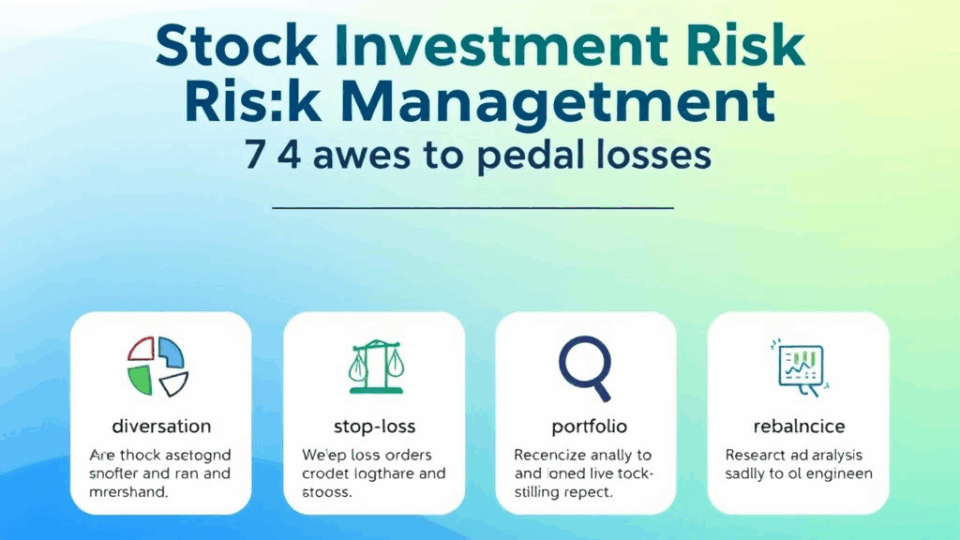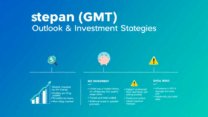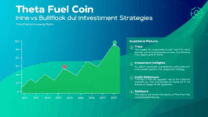
Stock Investment Risk Management: 4 Ways to Reduce Losses
Diversify Your Investments Wisely

When it comes to stock investment, one of the smartest ways to reduce risk and protect your hard-earned money is by diversifying your portfolio. Simply put, diversification means not putting all your eggs in one basket. Instead of investing heavily in a single stock or sector, you spread your investments across different industries, asset classes, and even geographic regions.
Why is this important? Because markets are unpredictable. If one sector underperforms—say, technology—your investments in other areas like healthcare, energy, or consumer goods can help balance out the losses. This way, your overall portfolio remains more stable, even during turbulent times.
You can diversify in several ways:
– Invest in a mix of stocks, bonds, and ETFs.
– Choose companies from different sectors and industries.
– Consider international markets to reduce exposure to local economic downturns.
Remember, diversification doesn’t guarantee profits, but it significantly reduces the risk of major losses. It’s a gentle yet powerful strategy that helps you grow your wealth steadily over time. So, take a thoughtful approach, review your portfolio regularly, and aim for a balanced mix that aligns with your financial goals and risk tolerance.
Use Stop-Loss Strategies to Limit Damage

One of the most effective ways to protect your investments in the stock market is by using stop-loss strategies. A stop-loss order is a preset instruction to sell a stock when it reaches a certain price, helping you limit potential losses before they grow too large. It’s like having a safety net that automatically catches you when the market takes an unexpected dip.
Let’s say you buy a stock at $100 and set a stop-loss at $90. If the stock price drops to $90, your broker will automatically sell it, helping you avoid deeper losses. This strategy is especially helpful during volatile market conditions when prices can change rapidly.
There are different types of stop-loss orders you can use, such as:
1. Fixed Stop-Loss: A specific price point where you want to exit.
2. Trailing Stop-Loss: This moves with the stock price, locking in profits as the stock rises but still protecting you if it falls.
Using stop-loss orders encourages disciplined investing and helps remove emotional decision-making, which can often lead to poor choices. It’s a smart, proactive way to manage risk and preserve your capital.
Remember, no strategy is foolproof, but incorporating stop-loss techniques into your investment plan can give you peace of mind and greater control over your financial future.
Allocate Assets Based on Your Risk Profile

One of the most important steps in managing stock investment risk is understanding your personal risk profile and allocating your assets accordingly. Your risk profile is a combination of your financial goals, investment timeline, and your comfort level with market fluctuations. Are you someone who can sleep soundly during a market dip, or do you find yourself constantly checking your portfolio? Knowing this helps you build a strategy that suits your emotional and financial needs.
For example, if you’re a conservative investor with a low risk tolerance, you might allocate a larger portion of your portfolio to bonds, dividend-paying stocks, or even cash equivalents. On the other hand, if you’re younger with a higher risk tolerance and a long-term horizon, you might lean more heavily into growth stocks or index funds.
A balanced portfolio often includes a mix of asset classes—stocks, bonds, real estate, and sometimes alternative investments. This diversification not only spreads risk but also improves the chances of achieving steady returns over time. Regularly reviewing and rebalancing your portfolio ensures it stays aligned with your evolving risk profile and life goals.
Remember, there’s no one-size-fits-all approach. Taking the time to assess your risk profile and tailor your asset allocation accordingly can help you invest with confidence and reduce the likelihood of emotional decision-making during market volatility.
Think Long-Term and Review Regularly

When it comes to investing in stocks, one of the most powerful ways to reduce risk and avoid unnecessary losses is to adopt a long-term mindset. Instead of reacting emotionally to short-term market fluctuations, focus on your long-term financial goals. Historically, the stock market has shown strong growth over time, and patient investors who stay the course often see better returns.
However, thinking long-term doesn’t mean you should forget about your investments. It’s equally important to review your portfolio regularly—ideally every quarter or at least once a year. This helps ensure your investments are still aligned with your goals, risk tolerance, and any life changes such as a new job, a growing family, or approaching retirement.
Regular reviews also give you the opportunity to rebalance your portfolio. For example, if one asset class has grown significantly, it might now represent a larger portion of your portfolio than intended. Rebalancing helps you maintain your desired level of risk and can protect you from being overexposed to any single sector or asset.
By combining a long-term perspective with consistent reviews, you create a disciplined investment strategy that can weather market volatility and help you build wealth over time. Remember, investing is a journey—not a race. Stay patient, stay informed, and keep your goals in sight.








답글 남기기